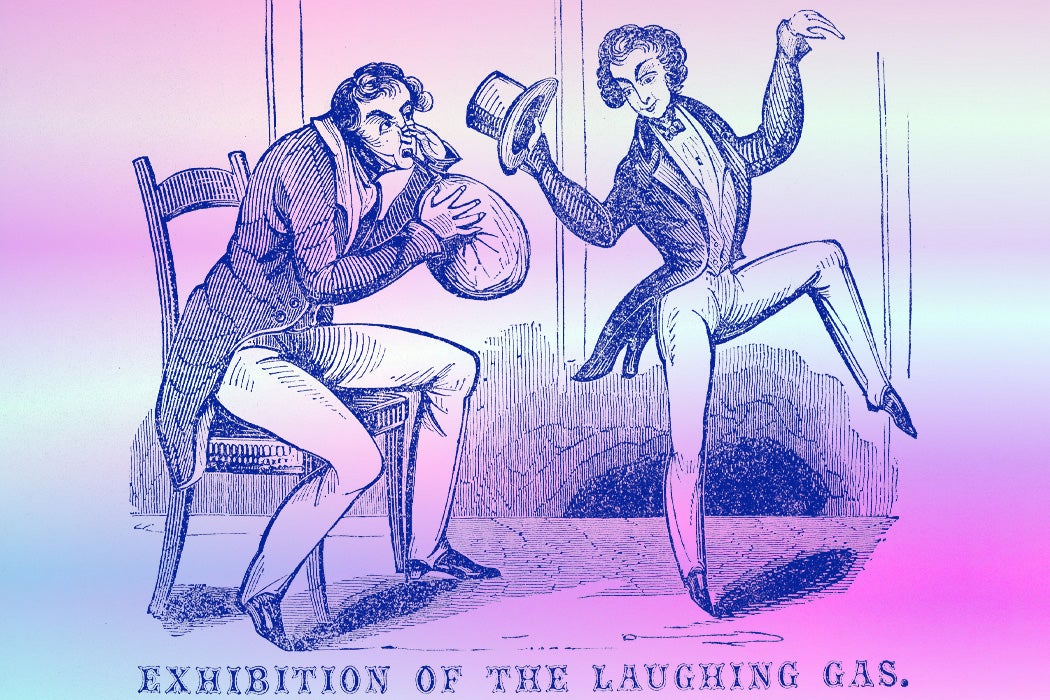The line between medicine and recreational drugs seems to be getting thinner. Cannabis, for example, can be a recreational drug or a medical one depending on the user’s needs. Meanwhile, doctors increasingly shun opioid pain relievers due to their dangerous level of addictiveness.
But the truth is, there’s always been some fuzziness in our distinctions between medicine and recreational drugs, as cultural historian Mike Jay demonstrates, describing some very entertaining medical research from the beginning of the nineteenth century.
Researchers Thomas Beddoes and Humphry Davy began experimenting with nitrous oxide (A.K.A. laughing gas) at the newly opened Medical Pneumatic Institution in Bristol England in 1799. Like many scientists of their time, Davy acted as his own guinea pig, capturing the gas and breathing it in.
“The objects around me became dazzling and my hearing more acute,” Davy wrote later. Soon, he was running, jumping around the room, shouting joyfully—actions that he only vaguely recalled afterward.
The researchers concluded that this new therapy might help people suffering from palsy or paralysis, injecting new energy into inactive limbs. And, indeed, they reported that trials on patients at the Institute allowed one to begin to move a paralyzed arm and another to walk without crutches for the first time in years.
The euphoric side effect of the gas made it more appealing than the unpleasant medicines and painful treatments commonly prescribed for these ailments. It also encouraged Davy to undertake extensive self-experimentation and recommend nitrous oxide even to perfectly healthy volunteers.
During the day, the Institution continued to serve ill people and host animal experiments. But at night, Jay writes, “it became a philosophical theatre in which the boundaries between experimenter and subject, spectator and performer were blurred to fascinating effect…. Those who took the plunge became a brotherhood, bonded by their shared initiation.”
Yet researchers who tried to repeat Beddoes and Davy’s efforts in other places sometimes reported that the only effects were nausea or an unpleasant throbbing in the head. As a medical student wrote, summarizing the general opinion of the studies in 1808, Davy’s accounts were “generally derided as extravagant and imaginary.”
Nitrous oxide did catch on for medical use in the mid-nineteenth century, not as an energizing agent but as a sedative, used at much higher dosages than the Institute had tried.
Once a Week
Jay notes that some findings might rehabilitate Beddoes and Davy’s reputations. First, medical experiments have found that nitrous oxides affect opioid receptors as well as neurotransmitters, potentially creating euphoria and altered states of consciousness as well as pain relief. And second, informal self-experimentation by legions of Grateful Dead fans and festival-goers has offered extensive anecdotal evidence of mind-bending effects of the gas.
As Jay writes, the different experiences found from inhaling the same substance in a concert parking lot or a dentist’s chair suggest how significant our expectations are to our experiences. It’s something to keep in mind as we acknowledge that all sorts of drugs can be used for both medical and recreational purposes.







